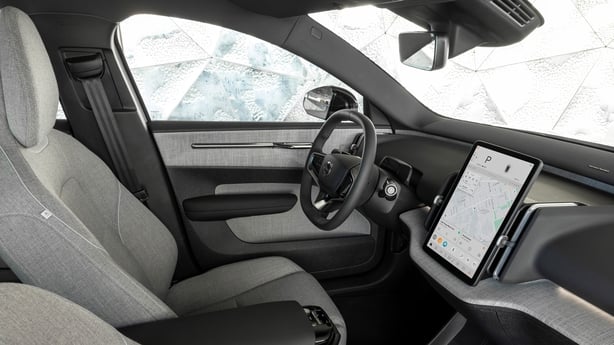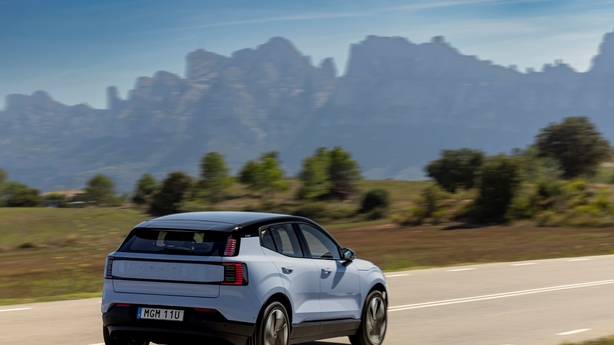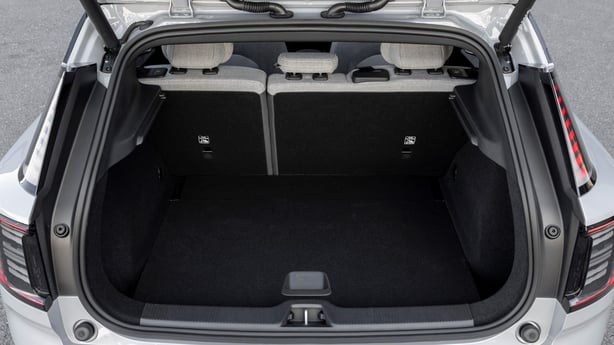To say the new Volvo EX30 interior is minimalist is a bit of an understatement. When you first sit into it you find yourself looking for buttons and switches, as you normally do when preparing to drive a new car. But the EX 30 doesn't have any.
Well, apart from a few that is. There are switches for the two front windows but none for adjusting the wing mirrors, for example. That’s because virtually every function is controlled by the Google-powered 12.3" screen that sits vertically in the middle of the dashboard.

Now, I don’t know about you, but I like to have basic controls in a car within easy reach and, when driving, I find having to go into a screen menu to do something as basic as adjusting the wing mirrors unnervingly distracting.
These are the instructions for adjusting the mirrors via the screen:
Press the car symbol in the bottom bar and select Settings.
Go to Controls → Mirrors and wipers → Adjust side mirrors.
Press Adjust.
The adjustment settings view appears.
Select the wing mirror you want to adjust.
Use the steering wheel buttons to adjust the selected mirror.
This is all just a bit much. Apart from Tesla, it’s hard to think of another car brand that has gone so far with this level of screen engagement. And this at a time when other manufacturers are either reverting - or planning to revert - to the use of more buttons.
Even VW’s chief executive officer, Thomas Schafer, was recently forced to admit that the over-reliance on screens for basic functions in VW’s iD range - and the difficulties this caused - had done a "lot of damage" to the brand after huge customer pushback.
"What are the most important functions ? Which need to go on buttons and which need to go on a screen ?", he conceded in a definite shift of policy.
Like many, I’m sure, I don’t digest the entire owner’s manual before driving a car but you may find yourself having to immerse yourself more and more in one with cars like this.
It can be a case of having to actually pull over to work through menus or risk serious distraction.

All that said, the EX30 is a really nice car to drive. It’s comfortable and has excellent road manners, ride and handling. It feels strong and secure in almost all driving conditions and doesn’t feel as compact as it is - at 4.2 metres long.
That does not mean, however, that it’s not cramped. The Ultra €54,595 version I drove had very attractive vegan leather seats and both driver and front passenger enjoyed a very comfortable journey. I am, however, tall and with the driver’s seat fully back, I’m not sure even a teenager would have had much legroom - something to be mindful of.

The boot capacity is another issue - at 318 litres it’s far from spacious - so if you’re a golfer or a big shopper this is some thing else to be very mindful of.
Overall, though, the EX30 is a very smart looking car and is designed cleverly to fulfill its mandate to be an easy car to manoeuvre around towns and cities - that's its principal function.
There are two battery options - a 49 kWh unit and a 69 kWh unit. The car I drove had the bigger battery at one stage showed a range of 220 km’s with a 91% charge and later (after charging) showed a range of 253 km’s with an 86% charge, which indicates the variations you can get with electric car during different driving conditions.
In fairness, the EX 30 was true to its range predictions and it was pretty economical. The screen has the capacity to indicate from the satellite system what charge you will have remaining when you reach your destination. It was very accurate and - like the technology used by Tesla - was reassuring to use in terms of reducing any range anxiety.
I enjoyed the car and liked both its compact dimensions and the fact that it doesn’t feel as heavy as other EV’s, which helps with economy.
The EX30 is strategically aimed at younger owners, probably as a way to attract them to the Volvo brand. They are perhaps more likely to be more comfortable with using such challenging screen software, but the challenges are the same for every driver.
At an entry price of €44,995 the EX 30 is reasonably good value for an EV but it's still expensive for a small. It will be really interesting to see how the Volvo-owning Chinese Geely Group have designed and engineered the forthcoming Smart#1 - a car that is built on exactly the same platform as the EX30. And what price it will be when it arrives in Ireland in the coming weeks.
In the meantime, the Chinese-owned MG and BYD represent better value for money than the EX30.


